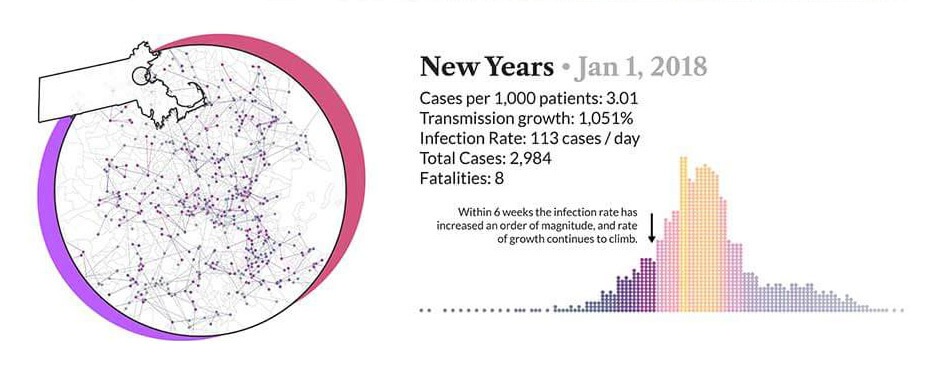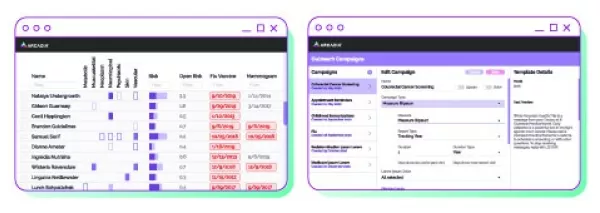Flu season is here
This is the flu: A look back at one of the worst influenza seasons in recent memory
While mortality and transmission rates of the novel coronavirus (COVID-19) far exceeds those of the 2017–2018 flu, a look backwards can still be instructive. Especially as we prepare for a potential resurgence of influenza this year.

Dr. Rich Parker on the impact of patient outreach during flu season
Last month I received the bivalent booster and a flu shot because I knew I had some high-contact events coming up. Most notably, I played violin in the World Doctors Orchestra combined with the Longwood Symphony Orchestra at Symphony Hall, which was a lifetime musical experience.
I was one of the few people to develop symptoms of COVID shortly after. I am so grateful for the availability of vaccines and treatments because they limited my symptoms dramatically. I didn’t need to see a doctor, and I didn’t miss a day of yoga or exercise.
That being said, we’re not out of the woods.
The Northern Hemisphere follows the Southern Hemisphere with flu outbreaks. There are some early reports out of Australia that it’s been an early and more aggressive flu season than usual. So there’s some concern that we may have the same problem here in the U.S. That paired with rising cases in COVID can put an undue burden on our health system.
How can we prepare? It’s not complicated. If people would get vaccinated, we would dramatically reduce the problem. Some people would still get sick, but the magnitude of hospitalization and death would be a fraction of what it was, what it is, and what it will be.
The problem is that there is a growing fear around vaccination. But there’s no alternative to continued education about the facts of reality. There are a significant plurality who are swayable with facts and good conversations. If we listen to patients and address their fears directly, there is a good chance we can change their minds.
There’s still time to prepare our health system for this year’s COVID and flu seasons. I encourage you to make efforts now to reach out to patients, address their fears, and inspire your populations to get vaccinated.
— Dr. Rich Parker, Chief Medical Officer, Arcadia
DATA SPOTLIGHT
Arcadia Engage: AI-Powered Patient Engagement

Scale care management programs. Automate data collection. Drive patient engagement. Arcadia Engage gives you the tools to identify and reach out to your high risk populations to close gaps in care and deliver better outcomes.
NEWS YOU CAN USE
Let’s put data to work to solve emerging challenges in healthcare
115.8 million doses of flu vaccines have been distributed this season. That’s trending below vaccinations in the past two years, and 5.6 percentage points lower than the 2019-20 pre-pandemic season. [CENTERS FOR DISEASE CONTROL]
On average there are 61,000 flu-related deaths each year. Compare this to only 2,038 reported flu cases at the beginning of the COVID-19 pandemic. Experts are keeping a close eye on flu activity in the Southern Hemisphere to mitigate the impact of a resurgence back to normal levels. [AMERICAN HOSPITAL ASSOCIATION]
Even a mild flu season could result in 300,000 hospitalizations. That paired with a fall or winter COVID wave could put a strain on hospital systems around the country. Experts are encouraging an effort to ramp up dual immunization of COVID and influenza for the 2022-2023 season. [TIME]
JOIN THE CONVERSATION
Watch On-Demand: The efficacy of patient outreach
Every month, we get a pulse on the most important topics in healthcare and data.
Patient outreach isn’t only effective for vaccination rates. Umpqua Health recently shared how they used SDoH data to provide air filtration units to patients in need during the Oregon wildfires. Watch on demand, or subscribe to keep updated on future episodes.
